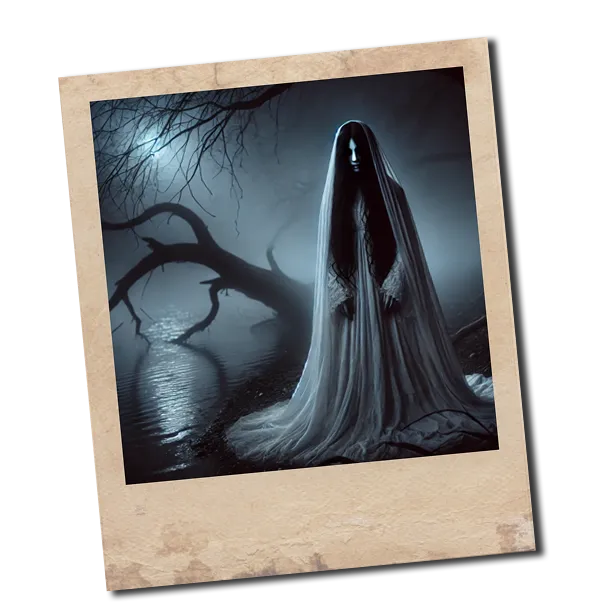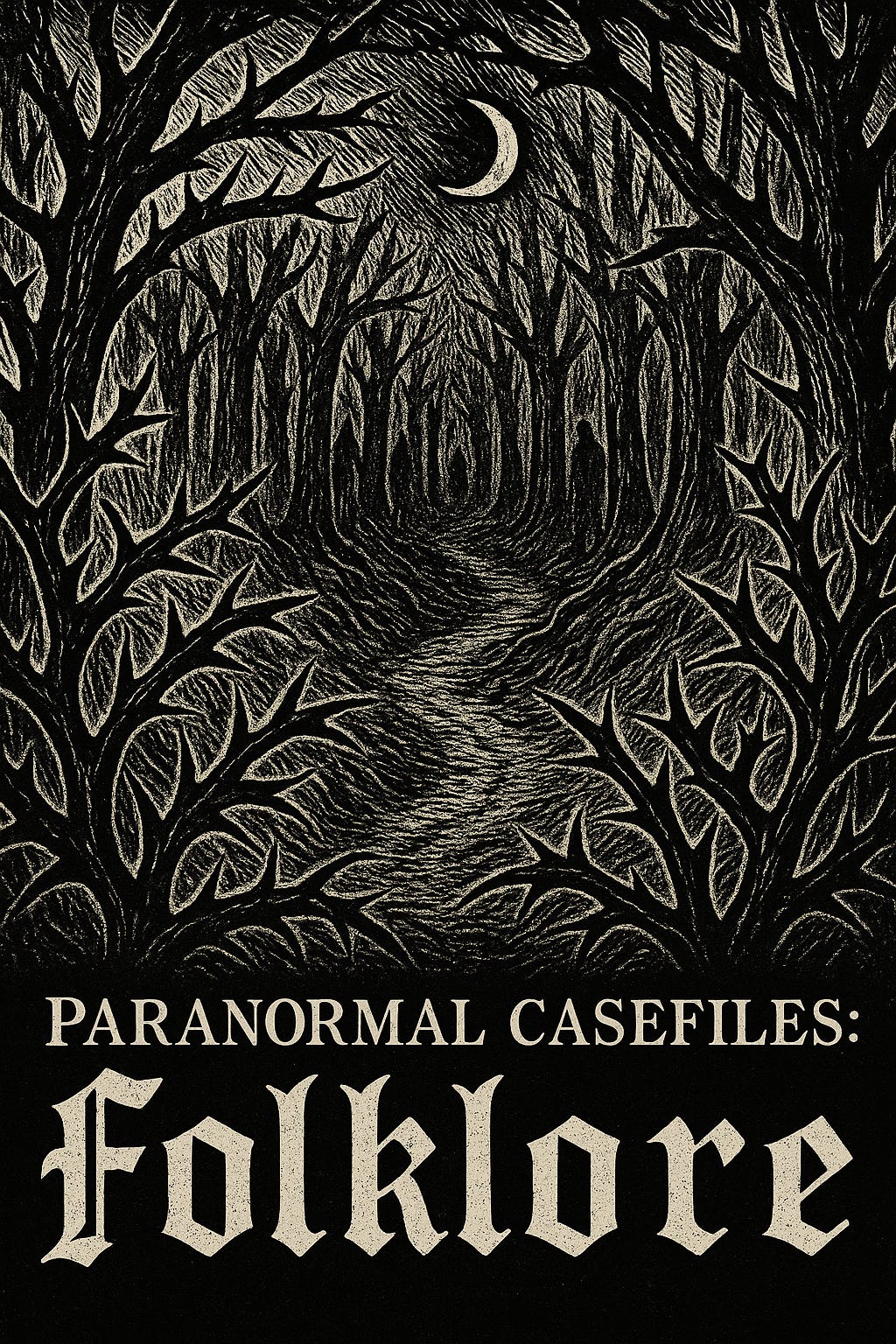La Llorona: The Weeping Woman Who Haunts the Night
or centuries, people have heard her cries near rivers and lakes. Are they just legend, or is La Llorona still searching for her lost children?
How to support my work:
Case File: La Llorona, The Weeping Woman
Case No.: LL-1550-MX
Classification: Paranormal Phenomenon / Urban Legend
Location: Mexico and Latin America, with later reports in the southwestern United States
Date of Incident: 1550s to Present
Filed by: Eyewitnesses and Folklorists
Status: Ongoing – Folklore and Sightings Documented, Explanation Inconclusive
The story of La Llorona, the Weeping Woman, is among the most haunting legends of Latin America, a tale carried on the breath of centuries and whispered along the banks of rivers where her cries are still said to echo. First recorded during the sixteenth century, though almost certainly older in origin, her legend tells of a woman driven to such despair that she drowned her children and then cast herself into the water. Death did not release her. Instead she was condemned to roam the earth eternally, her grief preserved in an unending lament. Her cry of “¡Ay, mis hijos!”—oh, my children—has terrified generations.
Her story has endured because it is more than a ghost tale. It speaks to profound human fears: the betrayal of love, the loss of family, and the punishment of guilt that cannot be undone. Some traditions tell that she was once called Maria, a beautiful woman who captured the heart of a wealthy nobleman. He gave her children but withdrew his love, leaving her scorned and abandoned. In despair and rage she carried her children to the river and drowned them, only to realise too late the horror of her act. She took her own life, but rather than reunion or forgiveness she was cursed. Her soul wanders still, caught between worlds, forever searching for the children she destroyed.
Reports of her presence are remarkably consistent. She is said to appear in the dead of night, a tall figure clad in white with long black hair that conceals her face. Some describe her walking along the banks, others say she glides across the water itself, her gown shifting like mist. Wherever she is seen, a sudden chill is felt, unnatural in its intensity, as though the temperature drops at her approach. Animals react before humans do. Dogs whine, horses shy away, and silence falls over birds. Those who hear her wail often describe it as piercing yet mournful, a sound unlike any natural voice, filled with despair that draws pity even as it terrifies. Some insist her cry plays tricks, sounding close when she is far and distant when she is near, a cruel disorientation that heightens the fear of being pursued.
The earliest chroniclers of New Spain wrote of a ghostly woman whose sobs carried through the streets of Mexico City, linking her to the fall of the Aztec empire. One account describes her cries drifting through the night just before the conquest, interpreted by the indigenous as a warning of catastrophe to come. To many, La Llorona was not simply a restless soul but a harbinger of doom, an omen of the destruction of an entire civilisation. Some folklorists trace her even further back, connecting her to the goddess Cihuacóatl, a maternal figure of Aztec religion who was said to weep for her children and warn of disaster. If this connection is correct, La Llorona may not only be a colonial legend but the survival of a pre-Hispanic spirit, reshaped in the aftermath of conquest.
Throughout the colonial period her tale spread, taking root in villages and towns far from the capital. Parents told their children that if they strayed near rivers at night La Llorona would take them. The story functioned as both moral and warning, teaching children obedience while protecting them from dangerous waterways. She became a figure of consequence, her eternal wandering serving as punishment for neglecting what mattered most. Over time, her story was told and retold until it became an inseparable part of Mexican cultural identity.
Scholars have long noted the psychological symbolism of La Llorona. She embodies grief that cannot be resolved and guilt that cannot be absolved. Unlike many ghost stories where death brings rest, her tragedy continues without end. For those who hear her cry, the effect is not only fear but also sorrow, as though her despair reaches across the boundary between worlds. Her punishment becomes a mirror for human fear of consequences that follow us beyond the grave.
In different regions her story changes in detail but not in essence. In some versions she kills her children in order to be free to pursue another man, an act of selfishness that forever brands her as monstrous. In others she is portrayed more sympathetically, as a mother betrayed and abandoned by her husband, driven to a desperate act she never intended. These variations reflect the communities that told them, reshaping La Llorona to embody local anxieties about family, morality, and the role of women.
Parallels can be found across cultures. In Ireland the banshee wails at night to foretell death. In ancient Greece the tale of Medea tells of a woman who killed her children in vengeance after betrayal. These stories echo La Llorona’s themes of maternal despair and terrible consequence. Yet her cry, echoing through rivers and canals, remains uniquely Mexican, tied to the landscape and history of the region.
Even in modern times her presence is reported with unsettling consistency. In 2003, tourists travelling through the canals of Xochimilco in Mexico City reported the sound of a woman’s cries carrying across the water. Their guide fell silent and pale, whispering only, “Es La Llorona,” as the group saw a white figure standing on the bank before fading from sight. In 2019, along the Rio Grande in Texas, two teenagers camping by the river awoke to sobbing that drew them to the water’s edge. There they saw a woman in white, her shoulders trembling with grief, who turned to reveal hollow eyes and a gaunt face. They fled, but the sound of her weeping continued until dawn. In 2021, a young couple walking near the Santa Fe River in New Mexico were overcome by a sudden chill, followed by faint sobs rising all around them. Across the water they saw a hazy woman in white who lifted her head and fixed them with hollow eyes. The grief they felt lingered for days afterward.
Paranormal groups in Mexico and the United States have attempted to document her, producing audio recordings of wails and photographs of blurred figures along riversides. Skeptics dismiss these as animals or tricks of light, yet the persistence of accounts across time and place suggests something deeper than coincidence. Whether spirit, omen, or cultural memory made manifest, La Llorona continues to be seen and heard.
Her story is not confined to folklore alone but lives on in the modern imagination. Films such as The Curse of La Llorona introduced her to global audiences, while musicians and writers have drawn on her sorrow as metaphor. In contemporary Mexico she has even been invoked as a figure of protest, her endless lament symbolising the grief of families searching for the disappeared. In this way her cry is both ancient and current, binding together past tragedy and present suffering.
Each generation inherits her tale, told by parents to their children and reinforced by those who swear they have heard her cries in the night. She is a ghost, a goddess, an omen, and a warning, her legend stretching from the Aztec empire through the Spanish conquest and into the present day. Whether she is encountered on the canals of Xochimilco, the rivers of New Mexico, or the borderlands of Texas, her story remains the same. La Llorona is a woman who lost everything and whose grief is eternal, her cries echoing across centuries and across continents.





